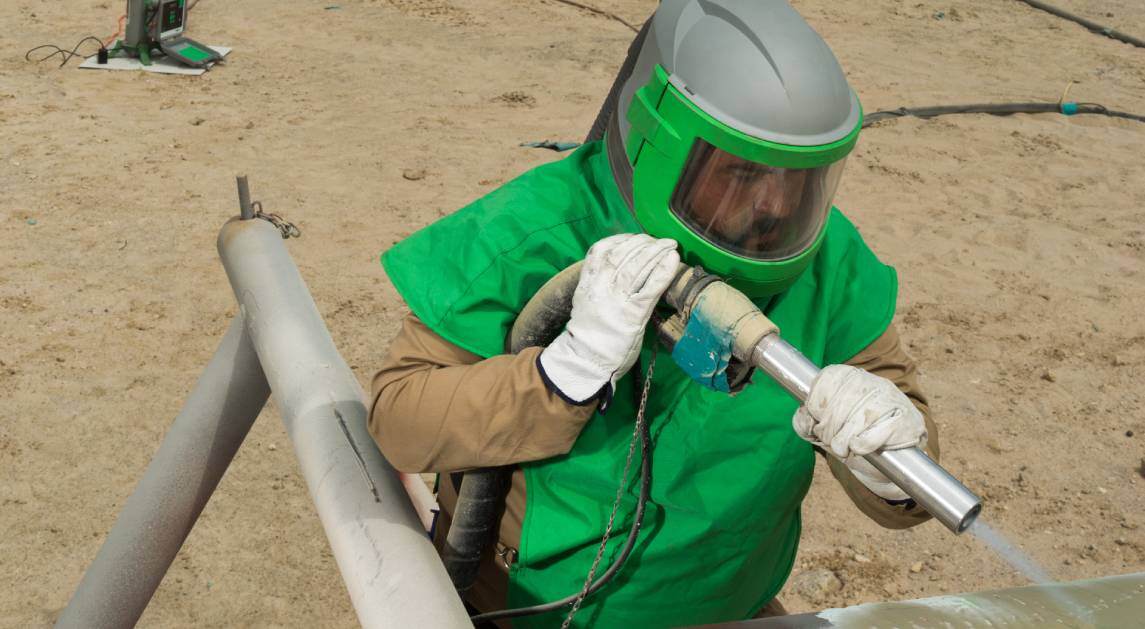You’re currently viewing the Americas website.
You’re currently viewing the Americas website.
Would you like to switch countries or language?Blast Abrasives
Topics
Waterjet Cutting
Topics
Resources
Categories
Types
Categories
Topics
Abrasive Blasting Tech Tips English Global
Your abrasives matter (Part I)
For years, a major misconception has been lurking around industrial sites. You’ve certainly heard it. Maybe you’ve even believed it. And it could be preventing your operation from achieving peak productivity and safety.
Simply put, not all garnets are the same—and the abrasive you choose matters more than you think. Use the quick tips below to start thinking differently about garnet (and find the right abrasive for your needs).
Recognize that not all garnets are created equal
Three characteristics—hardness, toughness and density—dictate a garnet abrasive’s efficiency and power. Consider this your baseline for evaluating garnet abrasive quality.
- The harder the garnet, the more efficiently it creates an anchoring profile and removes tough coatings.
- A tougher garnet has low friability, which means it’s more likely to resist fracturing on impact. Tougher garnets allow your operation to remove surface coatings more effectively—without creating unnecessary dust.
- Denser abrasive grains typically outperform less dense ones, enabling you to create a deeper anchor pattern.
Here’s the general rule of thumb: Harder, tougher and denser garnet will create a cleaner, more consistent profile. And that’s critical to preparing your surface for a coating application.
Check for hazards like dust and heavy metals
It’s no secret that dust can quickly impair your visibility. But it can also create airborne hazards that compromises your site’s safety in more ways than one. Ask your abrasive supplier for a Nephelometric Turbidity Unit (NTU) report; the higher the number, the more dust-producing particles in your abrasive.
Once you’ve determined your abrasive’s dust levels, check for heavy metals. Does your abrasive contain more than 1% free silica, radioactive substances beyond 1 becquerel per gram, or heavy metals such as arsenic, beryllium and copper? Then it’s time to find a safer alternative.
Sections 8 and 9 in your Safety Data Sheets (SDS) are particularly helpful for understanding your abrasive’s physical and chemical properties, as well as personal protection recommendations. However, an SDS can only tell you so much. To gain deeper insight into an abrasive’s safety profile, request independent reports from an NATA-approved lab.
Go beyond product data sheets
Your product data sheet (PDS) provides a good deal of information. What it doesn’t contain is a straightforward way to assess the accuracy of its data. Although the steps below require more time up front, they’ll pay off overall, ensuring your abrasive is efficient, safe and equipped to get the job done.
- Laboratory tests can provide the peace of mind that your PDS is accurate and up to date. Use an independent third party.
- On-site trials are low risk, but they can deliver tremendous value. Test a product in a controlled environment to evaluate product quality, consumption, productivity, safety and more.
- On-site health monitoring can clear the air on any HSE uncertainty, quantifying dust exposure and other risks to your workers’ health and safety.
In the world of industrial coatings, abrasives are often an afterthought. But despite the common myth, not all garnets are the same. Period.
The abrasive you choose can either unlock peak productivity or usher in a whole slew of safety risks. Find out more about GMA Garnet™ products today : info.global@gmagarnet.com
 GMA ToughBlast™
GMA ToughBlast™ GMA SpeedBlast™
GMA SpeedBlast™ GMA NewSteel™
GMA NewSteel™ Oil & Gas
Oil & Gas Industrial Fabrication & Maintenance
Industrial Fabrication & Maintenance Marine & Ship Building
Marine & Ship Building TruCost Blast Calculator
TruCost Blast Calculator Product Selector
Product Selector Brochure | GMA Garnet Blast Abrasives
Brochure | GMA Garnet Blast Abrasives News: GMA's Roadmap to Sustainability
News: GMA's Roadmap to Sustainability GMA ExcelCut
GMA ExcelCut GMA ProCut™
GMA ProCut™ GMA ClassicCut™
GMA ClassicCut™ Metal fabrication
Metal fabrication Glass cutting
Glass cutting Stone cutting
Stone cutting Case Study | GMA ClassicCut | Smith and Nephew
Case Study | GMA ClassicCut | Smith and Nephew Why is Garnet the preferred abrasive in Waterjet cutting?
Why is Garnet the preferred abrasive in Waterjet cutting? Water Filtration
Water Filtration Rubber Fillers
Rubber Fillers Anti-skid Products
Anti-skid Products Ilmenite Sand
Ilmenite Sand Pyroxene
Pyroxene Rutile
Rutile